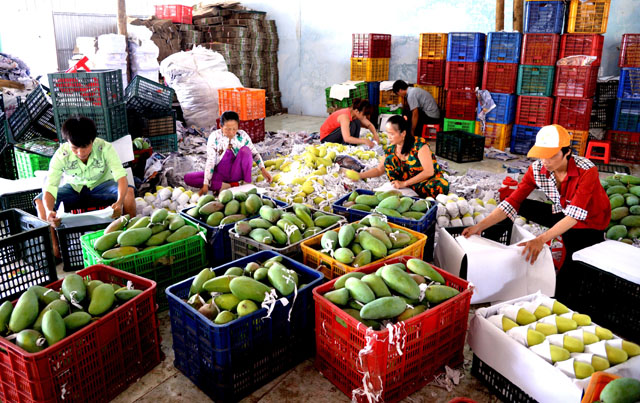Vietnam is a country with a rich agricultural tradition, boasting many famous specialty fruits such as Hoa Loc sand mango, Ri6 durian, Ben Tre green-peel pomelo, and Binh Thuan dragon fruit. However, despite this immense potential, bringing these fruits to international markets has long faced many challenges. One of the most decisive factors is post-harvest quality – a stage that directly impacts both commercial value and competitiveness. As a result, the application of post-harvest technology is gradually becoming a core strategy to enhance quality and expand market reach for locally distinctive products.
Specialty fruits are typically seasonal. During harvest periods, output increases sharply over a short time, leading to market oversupply and price drops, while the products cannot be stored for long. This reduces farmers' income and affects the entire supply chain. Post-harvest technologies—such as cold storage, ethylene treatment, irradiation, or smart packaging—can extend the shelf life of products while preserving their color, flavor, and nutritional value—key factors in competing with imported products.

A typical example is the use of Modified Atmosphere Packaging (MAP) for Hoa Loc sand mangoes. With this technology, the mangoes are packaged in an environment with carefully adjusted levels of oxygen, carbon dioxide, and nitrogen, slowing down ripening and limiting microbial growth. As a result, storage time can be extended from 7 days to up to 21 days, making it possible to export to demanding markets such as Japan, South Korea, or Europe.
In addition to packaging technology, the use of QR code traceability also enhances consumer trust in specialty fruits. Buyers can simply scan the code to access information about the product's origin, farming practices, packing facilities, and even the exact time and date of harvest. This is not only an effective marketing tool but also a method for brand protection and prevention of counterfeit or imitation goods—a persistent issue in many growing regions.
Furthermore, technologies using high-frequency waves or ultraviolet (UV) light are being applied by some enterprises to disinfect fruit surfaces and reduce microbial spoilage. These methods are especially suitable for thin-skinned fruits such as longan, lychee, or rambutan, which are highly sensitive to storage conditions. When fruit quality is ensured, businesses and cooperatives can negotiate higher prices and access markets with strict food safety requirements.
However, for these technologies to be truly effective, there must be close coordination among the government, businesses, and farmers. Investing in technology is not just about purchasing equipment; it also involves training in operation, maintenance, and—most importantly—changing farmers’ production mindset. Access to modern technology remains a distant concept for many, especially in remote or underdeveloped areas. Therefore, programs that support technology transfer, technical training, and agricultural extension should be strengthened, with a focus on regions with potential for specialty product development.
Another indispensable factor is the establishment of regional-scale post-harvest centers—facilities dedicated to standardized processing, sorting, treatment, and preservation. These centers can operate under a public-private partnership model, with the government investing in infrastructure and businesses handling operations. This model enables farmers to access high-tech services without having to invest in individual equipment, making it more affordable and efficient.
The future of Vietnam’s specialty fruits does not lie solely in the fields—it depends on how we handle them after harvest. Applying modern technologies can help products that were once limited to the domestic market reach global consumers. More than just improving quality, this approach helps preserve local values, increase sustainable income for farmers, and build a national brand from the most familiar things. That is the inevitable path for Vietnamese specialty fruits to claim their rightful place on the global agricultural map.
Ngày đăng: 06-06-2025

